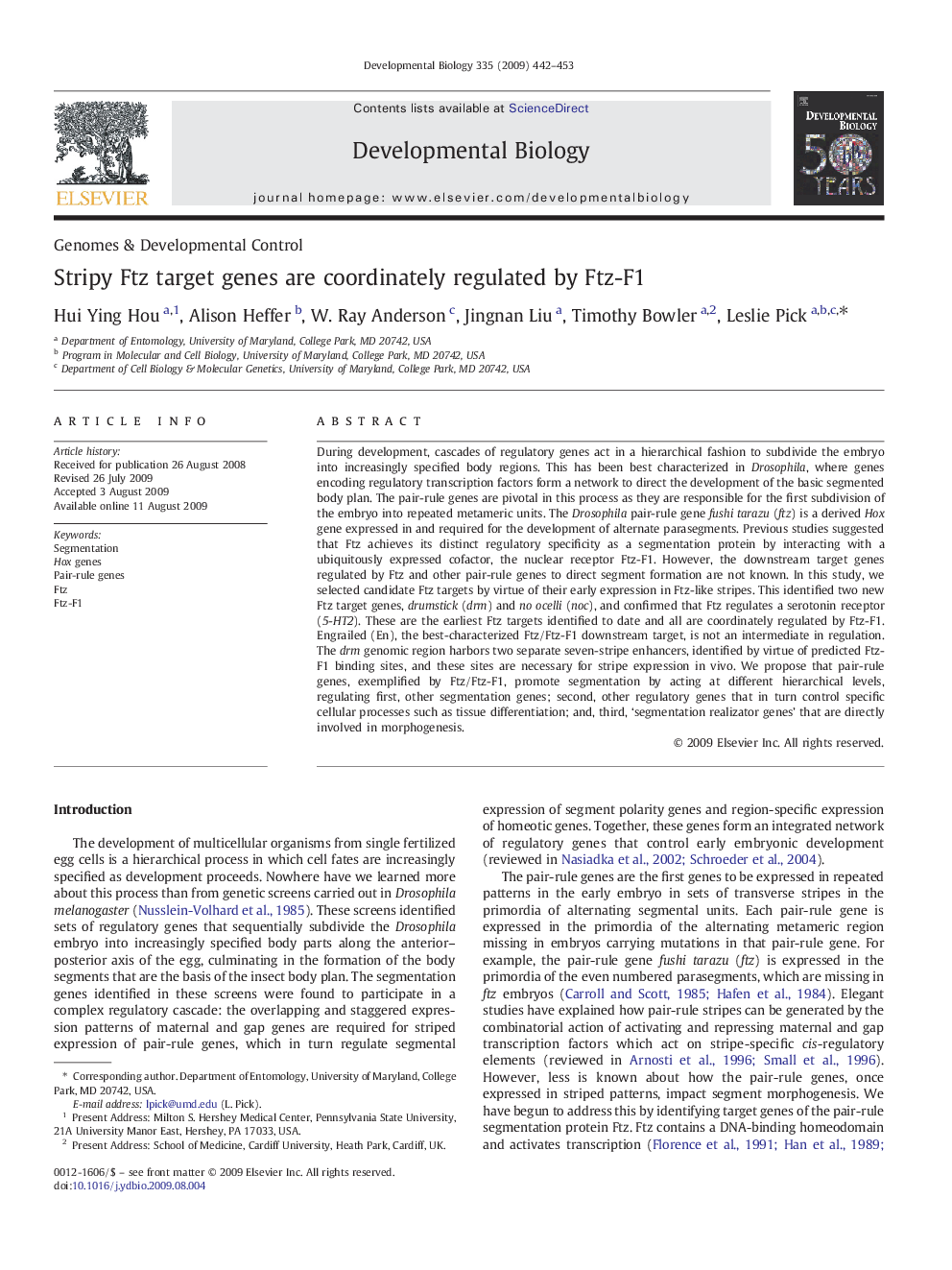| Article ID | Journal | Published Year | Pages | File Type |
|---|---|---|---|---|
| 10933170 | Developmental Biology | 2009 | 12 Pages |
Abstract
During development, cascades of regulatory genes act in a hierarchical fashion to subdivide the embryo into increasingly specified body regions. This has been best characterized in Drosophila, where genes encoding regulatory transcription factors form a network to direct the development of the basic segmented body plan. The pair-rule genes are pivotal in this process as they are responsible for the first subdivision of the embryo into repeated metameric units. The Drosophila pair-rule gene fushi tarazu (ftz) is a derived Hox gene expressed in and required for the development of alternate parasegments. Previous studies suggested that Ftz achieves its distinct regulatory specificity as a segmentation protein by interacting with a ubiquitously expressed cofactor, the nuclear receptor Ftz-F1. However, the downstream target genes regulated by Ftz and other pair-rule genes to direct segment formation are not known. In this study, we selected candidate Ftz targets by virtue of their early expression in Ftz-like stripes. This identified two new Ftz target genes, drumstick (drm) and no ocelli (noc), and confirmed that Ftz regulates a serotonin receptor (5-HT2). These are the earliest Ftz targets identified to date and all are coordinately regulated by Ftz-F1. Engrailed (En), the best-characterized Ftz/Ftz-F1 downstream target, is not an intermediate in regulation. The drm genomic region harbors two separate seven-stripe enhancers, identified by virtue of predicted Ftz-F1 binding sites, and these sites are necessary for stripe expression in vivo. We propose that pair-rule genes, exemplified by Ftz/Ftz-F1, promote segmentation by acting at different hierarchical levels, regulating first, other segmentation genes; second, other regulatory genes that in turn control specific cellular processes such as tissue differentiation; and, third, 'segmentation realizator genes' that are directly involved in morphogenesis.
Related Topics
Life Sciences
Biochemistry, Genetics and Molecular Biology
Cell Biology
Authors
Hui Ying Hou, Alison Heffer, W. Ray Anderson, Jingnan Liu, Timothy Bowler, Leslie Pick,
